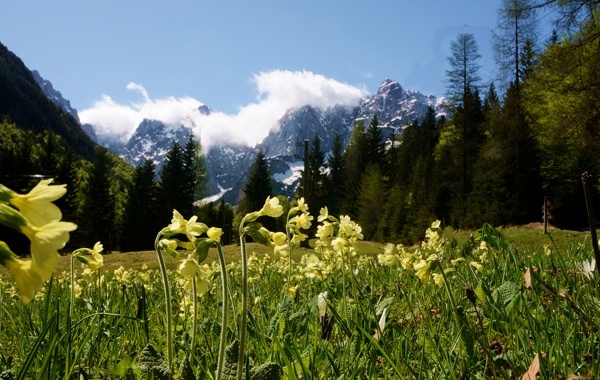It is one of the oldest Alpine parks and one of Slovenia’s greatest natural treasures.
The years that marked Triglav National Park:
- 1906: first proposal for conservation
- 1924: “Alpine Conservation Park” in the Triglav Lakes Valley (1,600 ha)
- 1981: decree declaring the Triglav Lakes Valley “Triglav National Park” (2,000 ha)
- 1981: Triglav National Park Act (83,807 ha)
 Ibex, Tourism Kranjska Gora archive
Ibex, Tourism Kranjska Gora archive  Flora, Tourism Kranjska Gora archive
Flora, Tourism Kranjska Gora archive
The TNP is located in the Julian Alps, close to the tri-border between Austria, Italy and Slovenia. The highest point of the area is the peak of Triglav (2,864 m), after which the park takes its name, and the lowest point is Tolminska korita (180 m).
Landscape features include glacial Alpine valleys, mountain plateaus and high mountains above the upper forest limit. The is characterised by crystal clear waters, deep gorges, remnant primeval forests and exceptionally rich biodiversity. Here, agriculture and nature conservation are allies, working together to preserve the habitats of plants and animals, and thereby the natural resources that sustain human life.
 The Pocar homestead, Tourism Kranjska Gora archive
The Pocar homestead, Tourism Kranjska Gora archive
Cultivated fields, arable fields, meadows, hay meadows and pastures, valley settlements and grazing mountain pastures, characteristic houses and numerous small hay lofts, stables and farmsteads make up the cultural landscape. The cultural heritage is recognisable for its diversity, as it is easy to identify and distinguish a typical Bohinj house from those in the Upper Sava Valley and the Posočje region.
